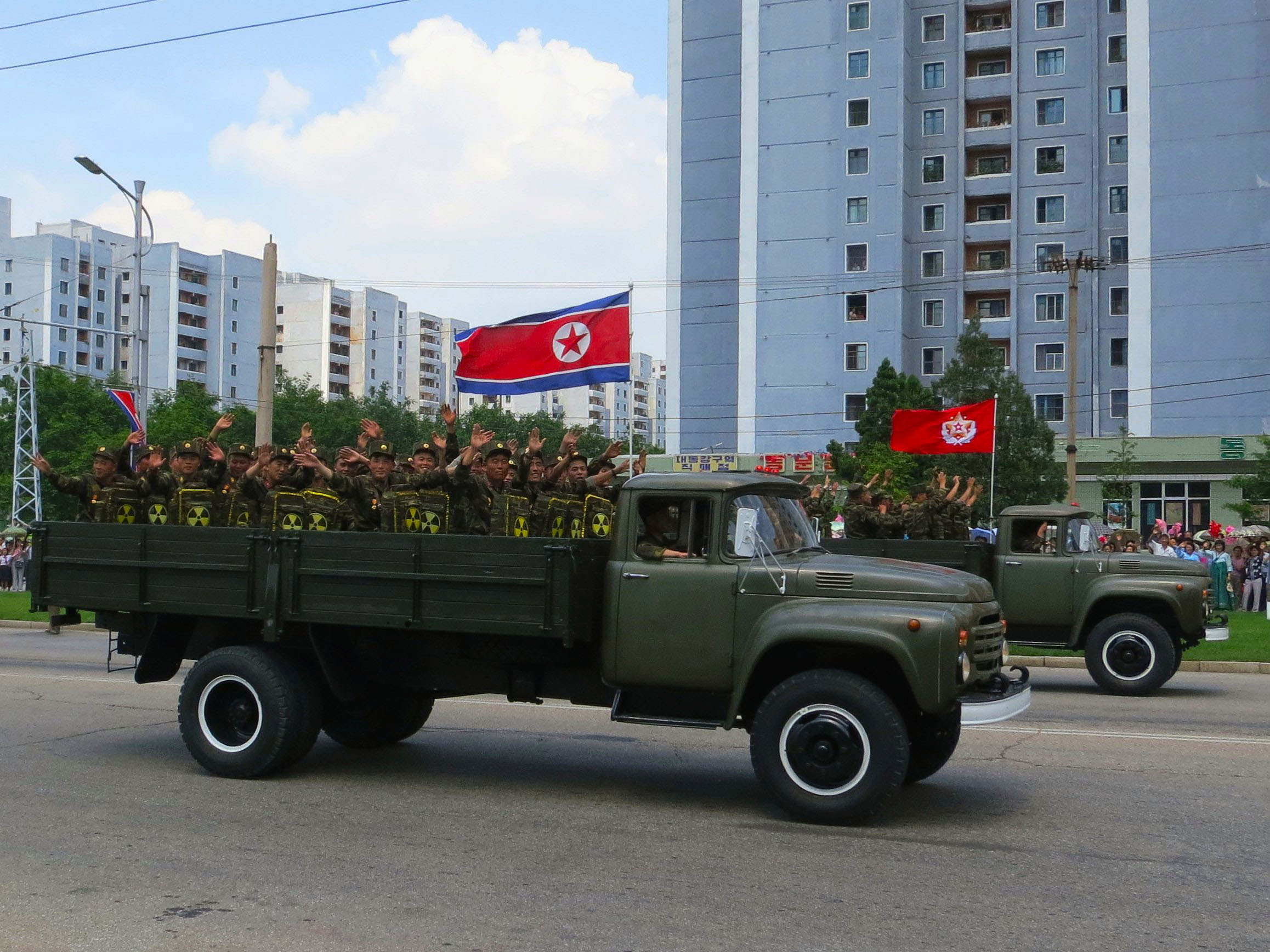Emerging Technologies and Nuclear Stability
In June 2021, the Centre for Science & Security Studies (CSSS) at King’s College London published a report on the impact of emerging technologies on crisis stability. But I wouldn’t blame you if the report is sitting unread in an open tab on your browser. As policy papers go, it is long, with a robust discussion of the research design and method. This short article is intended to summarise the report’s high-level findings and deal with some of the feedback the author has received in the first month of its publication.
The starting point for this report is that policymakers need a new way of thinking and talking about emerging technologies and nuclear risk
There is a widespread tendency to discuss potentially disruptive technologies either as an abstract, monolithic risk category or via individual cases that supposedly represent the entire category. Neither approach is advancing the conversation on which technologies could impact nuclear stability, and in what ways.
This report attempts to better structure this conversation by asking three questions:
- Which emerging technologies are most likely to escalate a crisis?
- How can policymakers and scholars better understand this impact?
- Which risk reduction measures could mitigate any potential risks of emerging technologies, while also capitalising on benefits and opportunities?
Before getting into the findings of the study, it is important to first clarify our terms.
The term ‘emerging technologies’ is imperfect, but it has currency with policymakers
Sceptics levy criticism that the term ‘emerging technologies’ is imprecise and even ahistorical. After all, what is ‘emerging’ about hypersonic weapon systems, if engineers designed the Silbervogel (Silver Bird) hypersonic boost-glide missile in Nazi Germany? What is new about lethal autonomous weapon systems, considering that autonomy and automation have diminished human control over the use of force since the 1970s? Finally, ‘cyber’ remains novel only in a relative sense and would otherwise appear to have thoroughly emerged, prompting experts to suggest we retire the ubiquitous and arguably meaningless moniker.
I argue that the term ‘emerging technologies’ does more to represent a community of experts and body of literature than it does to represent a fixed and unchanging group of technologies. While the term is vague and amorphous, so are the technologies that fall under it. Some suggest that its vagueness is constitutive of the concept and part of the appeal.
As a policy researcher, I straddle the line between academia and policy. From an academic perspective, the term ‘emerging technologies’ is imperfect. But it’s also one that—for better or worse—has currency with policymakers, so we cannot afford to do away with it if we seek to influence policy. If this report can help policymakers to see emerging technologies as heterogenous and deserving of bespoke risk reduction measures, then it has accomplished one of its objectives.
Which emerging technologies are affecting the nuclear realm, and in what ways?
The historian in me is eager to hold space for both continuity and change when discussing emerging technologies. We should be sceptical that ‘emerging tech’ constitutes a rupture in nuclear deterrence. I contend that emerging technologies are affecting the nuclear realm in three ways:
- Technological change is accelerating, and the locus of innovation has shifted towards private actors
- Technological innovation is outpacing nuclear policymaking
- Nuclear risks are rising, but there is no clear path forward for risk reduction
So, which technologies are most likely to escalate a conflict past the nuclear threshold? And how can policymakers and scholars alike better understand this impact?
The report identifies ten technologies with the potential to impact crisis stability in the next ten years. These are: AI-powered cyber operations; AI for intelligence, surveillance, and reconnaissance (ISR); deep-fake technology; directed energy weapons; hypersonic missiles; kinetic anti-satellite (ASAT) capabilities; Rendezvous and Proximity Operations (RPO) in space; satellite jamming and spoofing systems; small satellites (‘smallsats’) for ISR; and swarm robotics.
Evidently, this is a heterogenous group of technologies, spanning multiple operating domains, at different maturity or Technology Readiness Levels (TRL), with different barriers to implementation, and will impact different elements of the global nuclear order to varying extents and in varying timescales. Policymakers need a way to compare different technologies in terms of common parameters to determine where a state should allocate its limited resources.
Clustering the technologies enables us to identify similarities and differences in the ways these technologies might impact crisis stability
I use Machine Learning to group emerging technologies with similar risk profiles into four technology clusters. (For more information on the method, please see Annex A of the report, where this is discussed in detail.) Technology clusters can help policymakers to understand which technologies are most likely to escalate an ongoing crisis past the nuclear threshold, in what ways, and what can be done to mitigate these risks.
Cluster 1: Distort. The technologies in Cluster 1 (i.e., deep fake technology and satellite jamming and spoofing systems) were assessed by experts as capable of interrupting data flows and distorting the information landscape. This cluster is the most concerning in terms of nuclear risk, due to its potentially high impact and high feasibility of implementation. These technologies are likely to escalate an ongoing crisis in a nonlinear fashion. Suggested risk reduction measures include a holistic approach to combatting deep fakes through detection, legislation and education, protection of space-based assets linked to early warning or communications through security by design and holistic resilience approaches, and multilateral approaches to emerging space threats by encouraging responsible space behaviours.
Cluster 2: Compress. The technologies in Cluster 2 (i.e., kinetic anti-satellite capabilities, AI-powered cyber operations, hypersonic missiles, Rendezvous and Proximity Operations, and swarm robotics) affect the pace of conflict and could compress decision-making timelines. Suggested risk reduction measures include more ‘traditional’ arms control, a strategic cyber no first use policy, and nationally assured space situational awareness.
Cluster 3: Thwart. The technology in Cluster 3 (i.e., directed energy weapons) can credibly thwart or blunt a nuclear attack. However, augmenting defence may also be destabilising if it has the intended or ancillary effect of diminishing a country’s second-strike response. Suggested risk reduction measures include limiting the number of directed energy weapons that can be deployed and norms against placing directed energy weapons in space.
Cluster 4: Illuminate. The technologies in Cluster 4 (i.e., AI for ISR and smallsats for ISR) provide more accurate and comprehensive data flows to decision-makers. This technology cluster presents an opportunity for augmenting crisis stability. The suggested risk reduction measure is a commitment on behalf of nuclear weapon states not to target each other’s nuclear command, control, and communications infrastructure.
Broader risk reduction recommendations for nuclear possessors and non-possessors
In addition to cluster-specific recommendations, the report proposes broader risk reduction measures for nuclear possessors and non-possessors. This includes:
- Cooperation with the private sector, to reflect the changing defence industrial model. It is critical that private actors are aware of how their commercial products (i.e., dual-use commercial off-the-shelf technologies) could become an unwitting part of another state’s foreign policy objectives.
- Bridge-building between technology and policymaking, for example, providing incentives to recruit into government from the private sector to stay at the cutting edge of innovation.
- Bridge-building between NWS and NNWS. Nuclear weapon states (NWS) and non-nuclear weapon states (NNWS) should work together to address the risks that emerging technologies pose to crisis escalation, as they have for disarmament verification.
- Developing confidence-building measures to increase trust between P5 members. Confidence-building measures (e.g., regular dialogue, information sharing, best practice exchanges, and scientific cooperation programmes) could help create and sustain mutual understanding and trust between P5 members.
- Using emerging technologies to support nuclear risk reduction. New technologies offer potential benefits to stability, as highlighted by Cluster 4, but also distributed ledger technology for nuclear materials control, image recognition for verification activities, metadata for geolocation, and AI and synthetic environments for improved military planning and wargaming.
- Strategic stability dialogue. High-level dialogues such as the proposed relaunching of a bilateral US-Russia dialogue focused on “ensuring predictability,” reducing the risk of nuclear war, and setting the stage “for future arms control and risk reduction measures.”
To ignore emerging technologies increases nuclear risks
The objective of this report is to help policymakers identify how emerging technologies might increase nuclear risks and which technologies should be the focus of multilateral efforts to reduce those risks. It offers a framework for evaluating diverse technologies in a way that makes them comparable, by grouping technologies with similar risk profiles into technology clusters.
Technology clusters allow policymakers to compare different technologies in terms of common parameters. This is important because it helps states allocate resources, offers a new means for addressing emerging technologies in collaborative ways, and ultimately contributes to more comprehensive cross-domain risk reduction.
Ignoring the risks posed by emerging technologies could render the NPT irrelevant, but more importantly, it could increase the chance of nuclear weapon use. Cooperation on emerging technologies and nuclear risk reduction is necessary to reduce the likelihood and impact of a catastrophic nuclear exchange.
About the Author
Marina Favaro is a Consultant at the Centre for Science and Security Studies (CSSS) at King’s College London and a Research Fellow at the Institute for Peace Research and Security Policy (IFSH) at the University of Hamburg. Her research focuses on the impact of emerging technologies on arms control. From 2020 to 2021, Marina managed the Emerging Technologies research program at the think tank BASIC. Before that, Marina worked as an Analyst at RAND Europe, where her research focused on space security, cybersecurity, defense innovation, and the impact of emerging technologies on society. Marina conducts quantitative and qualitative research through a variety of methods, including futures and foresight methods (eg horizon scanning, STREAM, Delphi, and scenario development). She holds a Master’s degree in international relations and politics from the University of Cambridge.
Disclaimer: The opinions articulated above represent the views of the author(s) and do not necessarily reflect the position of the Asia Pacific Leadership Network or any of its members. The APLN’s website is a source of authoritative research and analysis and serves as a platform for debate and discussion among our senior network members, experts and practitioners, as well as the next generation of policymakers, analysts and advocates. Comments and responses can be emailed to apln@apln.network.
Image: RF Design/APLN


![[WMD] Nuclear Command, Control and Communications (NC3) in Asia Pacific](https://cms.apln.network/wp-content/uploads/2021/09/KakaoTalk_Photo_2021-10-01-16-29-43-002.png)

